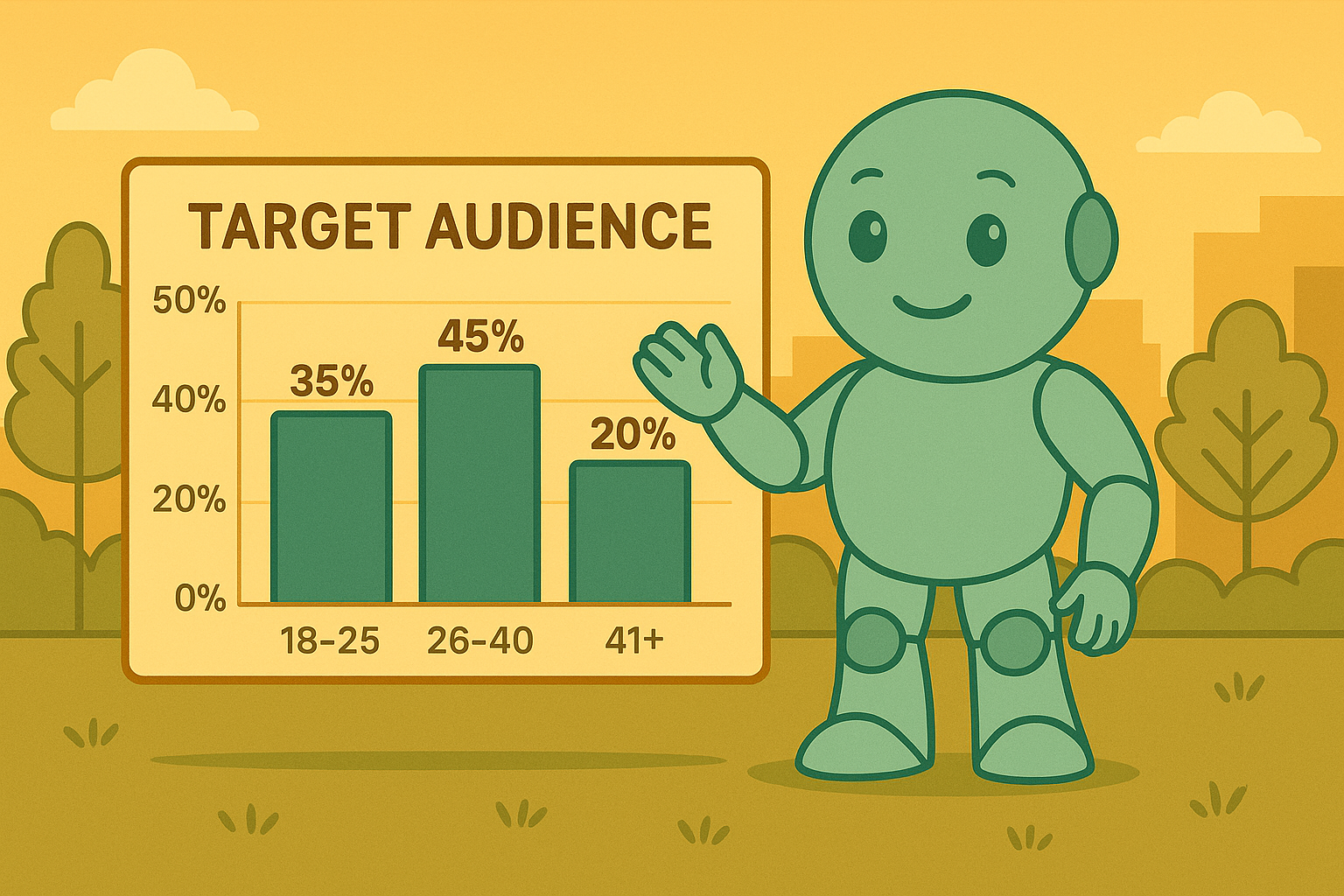Creating a Brand Identity: Boost Your Business Today
The True Power Behind Memorable Brand Identities

Creating a memorable brand identity goes far beyond simply designing a logo. It's about strategically crafting a cohesive presence that resonates with your target audience. This involves understanding consumer psychology and using key elements to create a lasting impression. A well-defined brand identity builds strong customer relationships and drives business growth. This means considering every customer touchpoint to ensure a consistent and compelling experience.
Why Brand Identity Matters
Consider some of the world's most iconic brands. What comes to mind when you see the Apple logo or the Nike swoosh? It evokes a feeling, a lifestyle, and a set of values. This is the power of a strong brand identity. It creates instant recognition and fosters trust, even before a customer interacts with your product or service. This emotional connection differentiates successful brands from the competition. A clear brand identity also provides internal direction, guiding marketing efforts and aligning communications with the overall brand strategy.
The Growing Importance of Brand Identity
Brand identity's significance in today's market is undeniable. Businesses are investing heavily in developing their brand identities. The global corporate identity design services market was valued at $8.62 billion in 2024. It's projected to reach $9.85 billion in 2025, a 14.3% compound annual growth rate (CAGR). This growth reflects the need for businesses to communicate effectively in a global marketplace and create a distinctive presence. For more detailed statistics, see this report: Learn more about the growth of corporate identity design services. This investment underscores the importance of a strong brand identity for competitiveness and long-term success.
Key Components of a Strong Brand Identity
Several key components contribute to a memorable brand identity. These elements work together to create a unified and consistent customer experience.
-
Visual Identity: This includes the logo, color palette, typography, and overall visual style. It's the face of your brand and the first impression you make.
-
Brand Voice: This is the tone and language used in all communications. It reflects your brand's personality and values.
-
Brand Values: These are the core principles and beliefs that guide your brand's actions and decisions.
-
Brand Messaging: These are the key messages communicated to your target audience, highlighting your unique selling propositions and benefits.
By strategically developing and implementing these components, you can create a brand identity that captures attention, builds lasting loyalty, and drives meaningful engagement. Investing in a strong brand identity lays the foundation for sustainable growth and long-term success.
Research: The Overlooked Foundation of Brand Success
A truly impactful brand identity isn't built on guesswork or fleeting trends. It arises from meticulous research that delves deep into the target audience. Brand architects who understand this know that genuine insights, not superficial observations, are the bedrock of a successful brand. This research forms the foundation for a brand that truly connects with its audience.
Understanding Your Audience
Understanding your audience is crucial. This goes beyond basic demographics to uncover their values, aspirations, pain points, and motivations. For example, a brand targeting young professionals might research their career goals, lifestyle preferences, and online behavior. This deeper understanding allows brands to tailor messaging and visual identity to resonate with the specific needs and desires of their target market. The infographic below visualizes the age distribution of a target audience and demonstrates the importance of segmenting research and tailoring your approach.

As the infographic shows, the largest segment of the target audience (45%) falls within the 26-40 age range, followed by the 18-25 age group (35%). This data indicates that the brand's messaging and visual identity should primarily appeal to these demographics while still acknowledging the 20% of the audience aged 41+. For further insights into naming strategies, explore resources like How to master naming tools for various needs.
Analyzing the Competitive Landscape
Analyzing the competitive landscape is equally important. Identifying competitors' strengths, weaknesses, and brand positioning reveals opportunities for differentiation. This involves studying their messaging, visual identity, target audience, and overall market presence.
Understanding the competitive landscape allows strategic brand positioning to stand out and capture market share. It also helps avoid unintentional mimicry and ensures a unique brand presence in the minds of consumers.
Turning Insights into Action
The ultimate goal of brand research is to transform raw data into actionable strategies. This involves identifying key patterns and insights from customer feedback, social listening, and market analysis.
These insights inform the development of a brand positioning that resonates with the target audience. This means defining the brand's unique value proposition, personality, and messaging. Grounding brand identity in solid research creates a strong foundation for long-term success and ensures alignment with the target market's needs and desires.
To illustrate the key components of effective brand research, consider the following table:
Essential Brand Research Components: A breakdown of the key research areas needed before creating a brand identity, with their purposes and methods
| Research Component | Purpose | Research Methods | Key Outcomes |
|---|---|---|---|
| Target Audience Analysis | Understand the needs, desires, and behaviors of your ideal customer | Surveys, interviews, focus groups, social media listening | Detailed customer profiles, understanding of purchase motivations, identification of key pain points |
| Competitive Analysis | Identify competitors, analyze their strategies, and find opportunities for differentiation | Market research reports, competitor websites, social media analysis | Competitive landscape overview, competitor strengths and weaknesses, opportunities for differentiation |
| Market Analysis | Understand market trends, size, and growth potential | Industry reports, market data analysis, trend forecasting | Market size and growth potential, emerging trends, potential market challenges |
This table highlights the essential research areas that inform a strong brand identity. By thoroughly investigating these components, businesses can develop a brand that truly connects with their target audience and stands out in a competitive market.
Crafting Visual Systems That Captivate and Convert

A brand's visual identity is more than just a pleasing aesthetic. It's a powerful tool that can significantly impact business outcomes. Strategic visual choices create psychological connections with consumers, influencing their behavior and shaping their perception of your brand. Therefore, building a brand identity requires careful consideration of every visual element.
Building a Cohesive Visual Ecosystem
Effective visual identities are cohesive ecosystems, not collections of isolated elements. Consider iconic brands like Apple or Nike. Their logos, typography, and color palettes work together seamlessly. This creates a consistent and recognizable brand experience.
This synergy amplifies the impact of each individual component, resulting in a unified and memorable brand image. It ensures that every visual touchpoint reinforces the brand's core message.
The Psychology of Color
Color psychology plays a vital role in evoking specific emotions from your target audience. For instance, blue often communicates trust and stability, a common choice for financial institutions. Red, on the other hand, can evoke excitement and urgency, making it a popular choice for fast-food brands.
Selecting the right color palette is essential for aligning your visual identity with your brand's personality and resonating with your intended audience. Careful color selection can significantly impact how consumers perceive your brand.
Typography and Brand Personality
Typography is more than just choosing attractive fonts. It subtly communicates your brand's personality and values. A classic serif font might convey tradition and sophistication, while a modern sans-serif font often projects innovation and simplicity.
Therefore, selecting appropriate typography is crucial. It reinforces your brand's message and contributes to a cohesive visual identity. The right font choices can enhance readability and strengthen your brand's overall impact.
Recent market analysis reveals compelling data about the importance of brand identity. By the end of 2023, over 75% of businesses worldwide were prioritizing investment in brand strategies over infrastructure development. Furthermore, digital branding now represents approximately 60% of global marketing budgets in 2024. This reflects the growing importance of online and social media platforms for brand engagement. More detailed statistics can be found here. This emphasizes the increasing recognition of brand-building as a driver of business success.
Creating Adaptable Visual Systems
Your visual system must maintain its integrity across diverse applications. This requires designing adaptable elements that translate effectively from website banners to social media posts and printed materials. Consistency is paramount, but flexibility ensures your visual identity thrives on various platforms.
Collaboration and Feedback
Collaborating effectively with designers is essential for creating a successful visual identity. This involves providing clear briefs, objectively evaluating concepts, and implementing feedback loops. This collaborative approach strengthens, rather than dilutes, your vision. Open communication and constructive feedback guarantee the final design aligns with your brand’s objectives and values.
Practical Approaches to Visual Identity Development
Developing a compelling visual identity involves these key steps:
-
Define your brand's core values and personality: This foundation informs all visual decisions.
-
Research your target audience and competitors: Understanding their preferences and market trends is vital.
-
Develop mood boards and explore different visual styles: This allows for experimentation and refinement.
-
Create a style guide that documents all visual elements: This ensures consistency across all applications.
By adhering to these guidelines, you can cultivate a visual identity that captivates your audience, communicates your brand's message effectively, and drives business growth. This strategic approach transforms your visual identity into a valuable asset for achieving your business objectives.
Developing a Brand Voice That Actually Resonates
While visuals are a critical component of brand identity, a brand's voice is equally important for building recognition and fostering customer loyalty. This involves moving beyond generic corporate messaging and crafting a distinct verbal identity that feels genuinely human. This human touch creates a deeper connection with the audience and strengthens brand affinity.
Finding the Human Connection
Creating a resonant brand voice begins with a deep understanding of your target audience. What are their values, aspirations, and pain points? A brand targeting environmentally conscious consumers, for example, might adopt a voice that reflects those concerns and emphasizes sustainability. This targeted approach allows brands to communicate authentically and build stronger relationships.
Creating a Messaging Hierarchy
Effective brand communication requires prioritizing key messages. A messaging hierarchy ensures consistency and clarity across all platforms. Think of it like building a house: the foundation is your core message, with supporting points building upon it. This structured approach provides a clear framework for all communication efforts.
From Abstract to Concrete: Defining Communication Guidelines
Translating abstract brand attributes into concrete communication guidelines is essential for effective communication. If a core brand value is "innovation," how is that reflected in marketing materials or customer service interactions? Developing specific guidelines ensures everyone within the organization understands how to communicate the brand's essence. For inspiration on sparking creativity in brand messaging, explore resources like our guide on naming inspiration.
Maintaining Consistency Across Channels
Consistency is key, but adapting your tone to different channels and audiences is equally crucial. Your core message remains constant, but how it's expressed on Twitter may differ from a formal email newsletter. This nuanced approach allows brands to connect with diverse audiences while maintaining a unified brand identity.
The Power of Brand Storytelling
Brand stories forge emotional connections and differentiate a brand from competitors. Consider the impact of Dove's "Real Beauty" campaign, which resonated with audiences by challenging conventional beauty standards. Developing compelling narratives aligned with brand values can profoundly impact customer perception and foster brand loyalty.
Balancing Authority and Authenticity
Effective brands strike a balance between projecting professional authority and expressing genuine personality. They communicate expertise while remaining relatable and approachable, building trust and strengthening customer relationships.
Practical Frameworks for Brand Voice Development
Consider these key steps when developing your brand voice:
-
Define your brand personality: Is your brand playful, serious, or sophisticated? This foundational step sets the tone for all communication.
-
Create a brand voice chart: This document outlines the brand's tone, language, and provides examples for different scenarios.
-
Train your team: Ensure everyone within the organization understands and consistently applies the brand voice guidelines.
-
Regularly review and refine: Brand voices should evolve alongside the brand itself. Regular review ensures ongoing relevance and effectiveness.
By following these steps, you can create a brand voice that resonates with your target audience, builds strong relationships, and contributes to long-term brand success.
Bringing Your Brand Identity to Life Across Touchpoints
A well-crafted brand identity truly delivers value only when consistently applied across every customer interaction. This consistent presence across all touchpoints builds brand recognition and fosters trust with your audience. This section explores strategic approaches to effectively implementing your brand identity.
Prioritizing Touchpoints Through Customer Journey Mapping
Prioritize touchpoints based on a deep understanding of the customer journey, not internal preferences. Consider which interactions have the greatest impact on customer perception and decision-making. For example, a compelling website landing page might be more important than internal office stationery. This customer-centric approach ensures resources are allocated for maximum brand impact.
Adapting to Diverse Platforms and Materials
Maintaining consistency while adapting to different platforms is essential. Your brand identity should be recognizable whether on a website, social media, a printed brochure, or merchandise. Consider how visuals, voice, and messaging translate across mediums. A vibrant online color palette might need adjustments for print. This adaptability ensures a cohesive brand experience. For additional insights on building a strong brand presence, check out this guide on creating catchy company names.
Building Flexible Systems, Not Rigid Rules
Successful brands build flexible systems, not rigid rules. This allows brand identity to evolve while preserving core elements. A brand might adapt its messaging slightly for different audience segments while maintaining a consistent voice. This flexibility ensures relevance in a dynamic market. This means balancing consistency with adaptability for longevity.
The branding agencies market, which helps create and manage brand identities, had a global value of $5.2 billion in 2023. Projections show growth to $8.7 billion by 2032, with a 5.9% CAGR from 2024 to 2032. This growth reflects the increasing importance of strong brand identities. More detailed statistics can be found here.
Creating User-Friendly Brand Guidelines
Comprehensive brand guidelines are essential, but only effective if used. Make sure your guidelines are accessible, easy to understand, and available to everyone. A digital format with clear examples and visuals can encourage adoption. This ensures consistent application across all touchpoints, creating a unified and impactful brand experience. This proactive approach strengthens brand consistency and prevents dilution.
To assist with implementing your brand identity effectively across various touchpoints, the following checklist provides a practical framework:
Brand Identity Implementation Checklist: A comprehensive checklist of touchpoints where brand identity should be consistently applied.
| Touchpoint Category | Specific Touchpoints | Implementation Priority | Common Challenges |
|---|---|---|---|
| Digital Presence | Website, Social Media, Email Marketing | High | Maintaining consistent visuals and messaging across platforms |
| Print Materials | Brochures, Business Cards, Packaging | Medium | Adapting digital color palettes for print, ensuring high-quality printing |
| Physical Space | Office Design, Retail Stores, Event Booths | Medium | Translating brand identity into a three-dimensional environment |
| Customer Service | Phone Interactions, Email Support, Chatbots | High | Ensuring consistent brand voice and tone across all customer service channels |
| Merchandise | Apparel, Promotional Products, Gifts | Low | Selecting appropriate merchandise that reflects brand values, managing inventory |
This checklist helps businesses prioritize and address potential roadblocks in implementing their brand identity. By systematically approaching each touchpoint, organizations can ensure a cohesive and consistent brand experience.
Measuring Impact and Evolving Your Brand Identity
Creating a brand identity isn't a static project; it's a continuous process. Successful brands recognize the need for their identity to adapt and evolve alongside market shifts and their own growth trajectory. This involves consistently measuring the effectiveness of your brand identity and discerning when to refresh elements versus maintaining a consistent brand image.
Establishing Meaningful Benchmarks
Measuring brand identity effectiveness transcends superficial metrics like social media followers. It's about establishing benchmarks directly tied to tangible business outcomes. Key metrics include:
- Brand Awareness: How familiar is your target audience with your brand?
- Brand Perception: What are their thoughts and feelings about your brand?
- Brand Equity: What is the overall value of your brand in the market?
These metrics provide a holistic view of your brand's performance. For instance, tracking website traffic, conversion rates, and customer lifetime value can reveal how effectively your brand identity resonates with your target audience and influences purchasing decisions. These quantifiable metrics showcase the real-world impact of a robust brand identity.
Strategic Evolution, Not Reactive Change
Understanding when to refresh your brand identity is critical. It's a process of strategic evolution, not reactive change. A complete rebranding is rarely required. Often, refreshing specific elements, like modernizing your logo or refining your brand voice, can be more impactful. This focused approach allows brands to remain contemporary while preserving valuable brand recognition. This involves establishing clear frameworks for evaluating your brand’s performance and pinpointing areas for improvement. It also requires differentiating between a necessary refresh and a transient trend.
Balancing Consistency and Relevance
Successfully evolving a brand identity hinges on balancing consistency with relevance. Maintaining core brand elements ensures recognition and fosters trust. Simultaneously, adapting to shifting market trends and evolving consumer preferences is equally vital. Consider how Coca-Cola has maintained its classic script logo while introducing variations and new product lines over the years. This strategy enables heritage brands to remain relevant while honoring their history.
Learning From Successes and Failures
Analyzing case studies of both successful and unsuccessful brand identity evolutions offers invaluable lessons. Understanding why certain rebrands resonate with audiences while others miss the mark can inform your own strategy. Examining the missteps of a competitor’s rebranding, for example, can help you avoid similar pitfalls.
Protecting and Managing Your Brand Assets
As your organization grows and evolves, so should your approach to brand management. This includes protecting your brand assets through trademarks and copyrights. It also encompasses managing your brand architecture: how your brand is organized and structured across different products, services, and sub-brands. This strategic management safeguards long-term brand value and maintains clarity in the market.
Ready to craft a compelling and enduring brand identity? NameRobot offers the tools and resources you need to bring your vision to life. From AI-powered name generators to trademark checks and brand scoring, NameRobot empowers you to build a brand that truly stands out. Visit NameRobot now!















